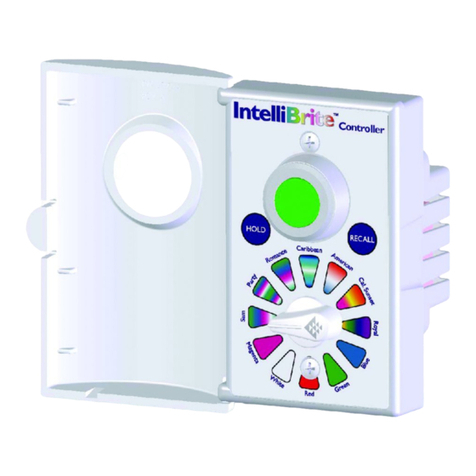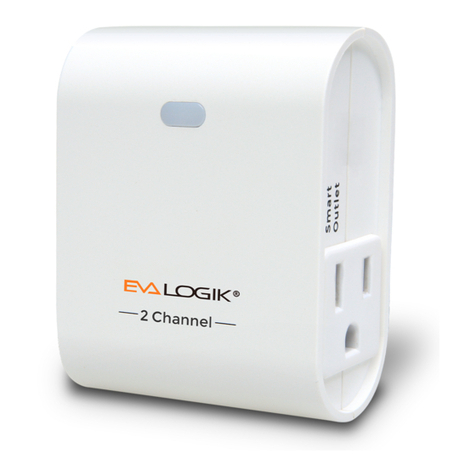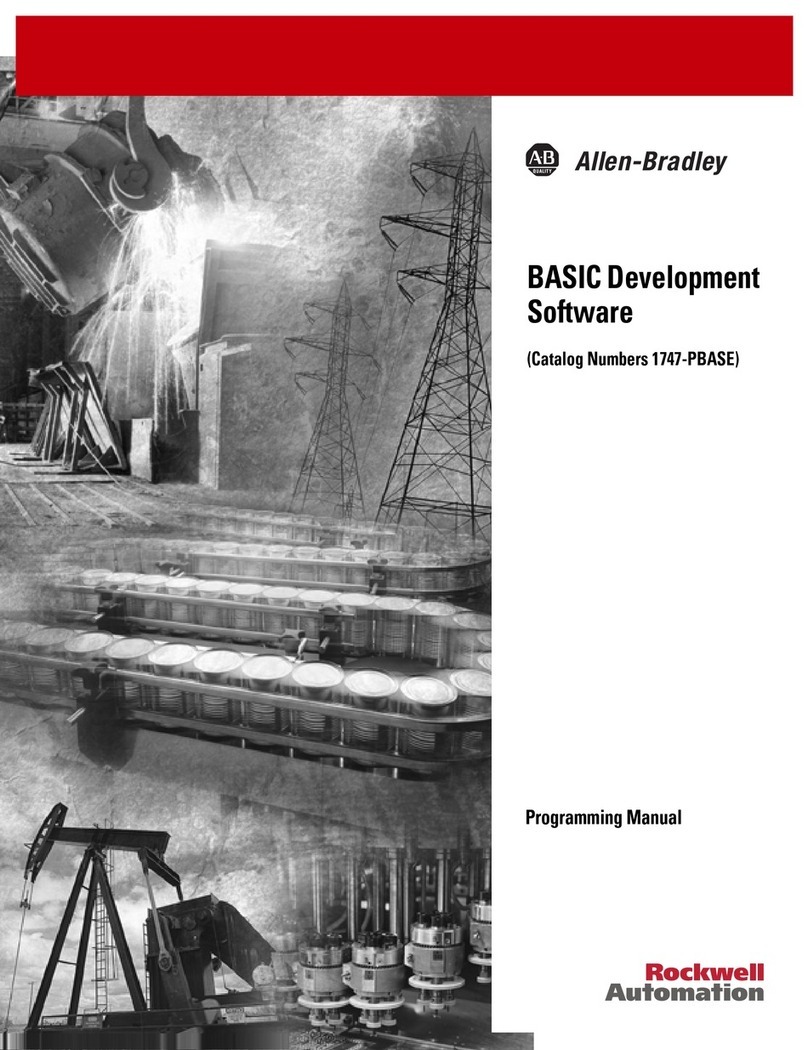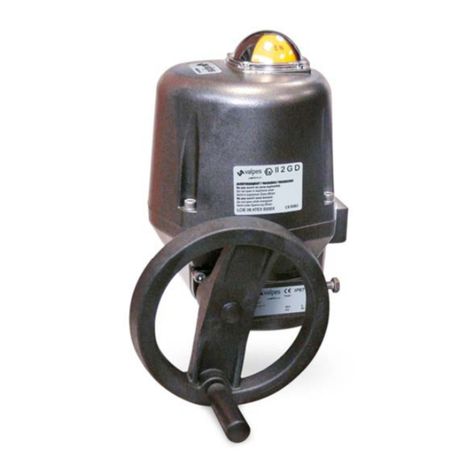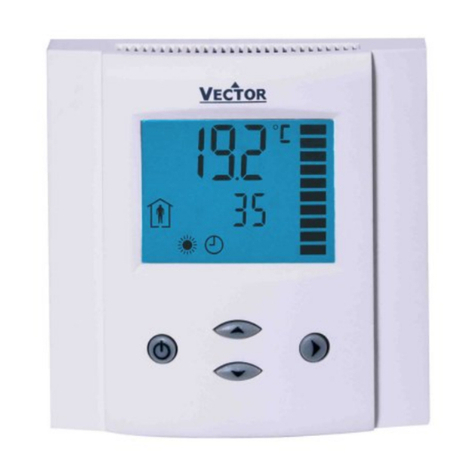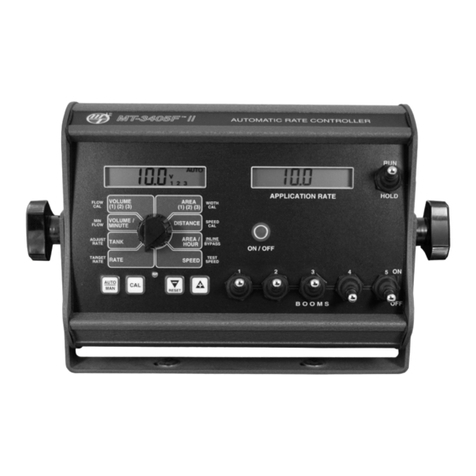Digital Alert Systems DASAMC User manual

Digital Alert Systems
A division of Monroe Electronics
585-765-1155 | fax 585-765-9330
100 Housel Ave. | Lyndonville | NY | 14098
www.digitalalertsystems.com
Copyright © 2011-2016 Digital Alert Systems, a division of Monroe Electronics Inc.
Information herein is considered accurate at the time of publication. We constantly strive to
improve our products and services therefore some specifications are subject to change
without notice. MultiPlayer and EAS-Net are trademarks of Digital Alert Systems and
Monroe Electronics. All other trademarks are property of their respective owners.
Revision: 1 Publication: DASAMSMAN-8116
Audio Management System
User Manual
Version 3.0

Digital Alert Systems AMS Installation / Operation & Integration Guide
Revision 3.0 Page 2 of 31
TABLE&OF&CONTENTS&
AUDIO MANAGEMENT SYSTEM INSTALLATION / OPERATION & INTEGRATION 3
Introduction 3
How it works 3
Installation 4
CONFIGURATION STEPS 4
STEP 1. MULTIPLAYER — INSTALLATION AND INITIAL CONFIGURATION 5
MultiPlayer - Mounting 5
MultiPlayer – AMS Configuration Examples 5
MultiPlayer - Wiring 6
MultiPlayer - Audio Connections 6
MultiPlayer - GPI’s & GPO’s 6
MultiPlayer - Setting/Modifying IP Address 7
MultiPlayer - Resetting Default IP 7
MultiPlayer - Audio Port Configuration 8
STEP 2. AMC — INSTALLATION AND INITIAL CONFIGURATION 9
Mounting 9
Wiring 9
Configuring 9
AMC Menus 9
Log In Screen 9
·
AMC Configure > MultiPlayer 12
·
AMC Configure > User 12
·
AMC Configure > Playout 13
·
AMC Configure > Sources 14
·
AMC Configure > Channels 15
·
AMC Configure > Network 16
·
AMC Configure > TTS 17
·
AMC Configure > Date/Time 19
·
AMC Configure > System 20
·
AMC Configure > GPIO 21
STEP 3 – DATA SOURCE CONFIGURATION 24
WSI – Live:Wire™ 24
WSI – TruAlert™ 25
Newsroom Solutions – NewsTicker™ 25
Business Technology Inc. - BTI 26
APPENDIX 30
Changing PC Network Settings 30
Specifications 31

Digital Alert Systems AMS Installation / Operation & Integration Guide
Revision 3.0 Page 3 of 31
Digital Alert Systems Audio Management System
Installation / Operation & Integration
Introduction
The Digital Alert Systems (DAS) - Audio Management System (AMS) –
is designed as a simple solution for the “Twenty-First Century
Communications and Video Accessibility Act of 2010”1 (or simply
21CVAA) compliance, which requires television stations to provide audio
description in their Secondary Audio Program (SAP) channel to aurally
represent any “emergency information” appearing on the main channel.
This means any crawl or text displays on the main channel such as
weather alerts, emergency conditions, etc. – separate of actual
newscasts or EAS alerts – must be “voiced” on the SAP channel. In
addition, an “attention” signal or tone must be inserted on the main
channel to alert or indicate to viewer’s emergency audio is available on
the secondary channel.
The AMS is a two-part system consisting of a DAS Audio Message Controller (AMC) and its companion MultiPlayer™ whose
front panels are shown in Figure 2 and Figure 3 respectively; together provide proper message audio for both Main and SAP
audio streams. The DAS AMS is designed to aggregate information from a variety of sources, convert the text information to
audio using a high-quality Text-To-Speech (TTS) convertor, prepare it for playback on the different audio channels, then provide
audio and triggering signals on all configured channels under a single user interface.
Figure 2 Digital Alert Systems Audio Message Controller - Part 1 of the Audio Management System
Figure 3 Digital Alert Systems MultiPlayer™ - Part 2 of the Audio Management System
How it works
Both the Audio Message Controller and MultiPlayer are linked via a standard Ethernet (TCP/IP) network, which provides a
properly credentialed operator system configuration and control using any standard web-browser. Once configured, the AMC
gathers emergency information from a variety of sources by monitoring network file locations or by other systems transferring
files to it then applying input filters to retrieve the appropriate information for text-to-speech conversion and subsequent queuing
and playout.
Besides actively monitoring data sources, an operator may load a pre-produced audio file, enter message text directly, or cut
and paste message text for automatic Text-To-Speech conversion. The AMC then handoffs the .WAV file, or the TTS audio file,
to the MultiPlayer readying it for playback.
1 http://www.gpo.gov/fdsys/pkg/BILLS-111s3304enr/pdf/BILLS-111s3304enr.pdf
!"#$%&'()*$+"*
,"-+)*
./"+&01#%-2)23
!"#$"%&
"'()*$
%+,,-.+$
&*/01*22+1$
4$51&6*"7*$8&9-25"
.:+)*)"&91$%"7&"*&9;:3
:)#"12$*<&9-25"&6*"7*$8
.:+)*)"&91$%"7&"*&9;:3
4$51&6*"7*$8&9-25"&
.:+)*)"&91$%"7&"*&9;:3
:)#"12$*<&9-25"&6*"7*$8
.:+)*)"&91$%"7&"*&9;:3
6%$<=$#>&?*577)*
!"#$%3
%'2432-5+1$ 4$51&@6'
:96&@6'
01#"8517&A$+$
.:)*5$%B&C4!B&)+#D3
Figure 1 Simplified AMS block diagram – incoming data is
converted to audio and played back on Main or SAP channels

Digital Alert Systems AMS Installation / Operation & Integration Guide
Revision 3.0 Page 4 of 31
Once an audio message is loaded (queued) in the AMS, the playback can be triggered in one of three ways;
1. Automatically - immediately after the audio message is loaded
2. By GPI trigger
3. By the operator clicking the "Play" button on the user interface
There are three Audio Types defined by the AMC and managed by the MultiPlayer
Audio Type
Action
Main
Plays attention tone only
SAP
(Secondary Audio Program)
Plays attention tone immediately followed by the alert text audio repeated the
number of times defined in AMC. The attention tone is not repeated.
Preview
Provides an audio output for an operator to listen to the queued event without
attention tone, or interrupting either audio program streams. Very useful for
evaluating word pronunciations while modifying the TTS lexicon
Table 1 AMS Audio Type definitions
When activated, Main audio plays the preset attention tone then quickly returns to normal programming. The user can upload a
.WAV file of their liking perhaps a two-tone burst or a pre-recorded announcer indicating, “Additional audio information is
available on your secondary audio channel”, or use the default three tone alert programed with the unit.
Simultaneously the SAP (Secondary Audio Program) port is switched in and plays its audio message the two times as the rules
require, or a user defined number of iterations, after which it returns to normal SAP audio.
Installation
Each piece of the AMS it designed to be rack mounted in a standard EIA 19” rack assembly. The location of each unit is best
determined depending on the easiest location for wiring the various audio and video connections.
Configuration Steps
The installation and configuration will cover three major steps;
Step 1. MultiPlayer — Installation and initial configuration
Step 2. AMC — Installation and initial configuration
Step 3. Data Source Configuration
Each of these steps is covered in detail within the following pages. Additional information is also available in the Appendix and
on-line at www.digitalalertsystems.com

Digital Alert Systems AMS Installation / Operation & Integration Guide
Revision 3.0 Page 5 of 31
Step 1. MultiPlayer — Installation and initial configuration
The Digital Alert Systems MultiPlayer (model DASMP) is uniquely designed four-channel (designated as Ports 1 thru 4) audio
player and program switcher. The MultiPlayer works in conjunction with the AMC to provide independent audio playout for up to
four discrete channels whose particular operating attributes are defined in the AMC. The four independent ports can be
configured for mono-analog or stereo AES and ports can be “bonded” or grouped together to create multi-channel audio
configurations described below. The MultiPlayer’s flexible design allows it to be configured to use its internal switching or
originate the audio signal(s) for switching or embedding by downstream devices, including independent GPO’s to trigger these
devices. The MultiPlayer features automatic program bypass in the event of power fail thus assuring the program input for any
port is automatically routed to the program output of the same port if there is loss of power or power supply failure.
For clarity the term Audio Signal refers to the physical nature of the signal i.e. (AES) digital audio or analog, while Audio Type
denotes the action that will be applied to the signal during playback.
MultiPlayer - Mounting
The MultiPlayer manages the audio and contact closure wiring; therefore to facilitate ease of wiring it should be placed in close
proximity to audio signal sources and control points. The unit is attached to a 19” EIA equipment rack using the standard
mounting holes on the front panel. Mounting screws are included in the shipping box.
MultiPlayer – AMS Configuration Examples
The Multiplayer features four Ports, each having an independent audio switch, four (4) GPI’s, and two (2) GPO’s. Based on the
required number of audio channels for the application each port may be used and configured in a different manner. Playback
control PLAY/PAUSE/STOP can be independently managed per port, however in the AMS application the incoming data is the
same for all ports and therefore creates the same audio file which is loaded into each channel.
For simplicity, it may be a good idea to wire the station’s Main program audio through Port 1 and the associated SAP channel on
Port 2. This is by no means the only configuration as there are a variety of ways the MultiPlayer and AMC can be configured to
manage different signal and source scenarios.
!"#$%&'()*$+"*
,"-+)*
./"+&01#%-2)23
456&578
5-29"&
7)::$;)&
8"1+*"%%)*&
7$91&<*";*$=&5-29"
.6+)*)"&51$%";&"*&5>63
6)#"12$*?&5-29"&<*";*$=
.6+)*)"&51$%";&"*&5>63
7$91&<*";*$=&5-29"&
.6+)*)"&51$%";&"*&5>63
6)#"12$*?&5-29"&<*";*$=
.6+)*)"&51$%";&"*&5>63
<%$?@$#A&B*9;;)*:&.'(C"1$%3
456&7<
7-%C<%$?)*&
7$91&D<'
65<&D<'
01#"=91;&4$+$
.6)*9$%E&F7!E&)+#G3
Data$Layer$
Signal$Layer$ 7-%C<%$?)*&-:)2&H"*&:9;1$%&:I9+#J91;
!"#$%&'()*$+"*
,"-+)*
./"+&01#%-2)23
456&578
5-29"&
7)::$;)&
8"1+*"%%)*&
7$91&<*";*$=&5-29"&
.6+)*)"&51$%";&"*&5>63
6)#"12$*?&5-29"&<*";*$=
.6+)*)"&51$%";&"*&5>63
<%$?@$#A&B*9;;)*:&.'(C"1$%3
456&7<
7-%C<%$?)*& 7$91&D<'
65<&D<'
01#"=91;&4$+$
.6)*9$%E&F7!E&)+#G3
Data$Layer$
Signal$Layer$ 7-%C<%$?)*&-:)2&$:&:"-*#)
B"&2"H1:+*)$=&2)I9#):E
)G;G&)=@)22)*:E&)+#G
Figure 5 AMS wired for program audio switching
Figure 4 AMS wired for audio origination, triggering downstream
devices

Digital Alert Systems AMS Installation / Operation & Integration Guide
Revision 3.0 Page 6 of 31
MultiPlayer - Wiring
MultiPlayer - Audio Connections
Audio connections are made to and from the MultiPlayer for each audio signal through the XLR connections on the ports labeled
1, 2, 3 & 4 as shown Figure 6. The AMS application does not require the Master Port and this port should remain unused.
Figure 6 MultiPlayer rear panel showing connections on Ports 1 -4. Master Port is not used
MultiPlayer ports are configured by selecting one of the standard audio signals then, under the AMC interface, selecting the
audio type. In this manner any port may be used for any audio signal as each port is configured for the audio type; Main, SAP,
or Preview in the AMC configuration. This allows mixing and matching any audio type across the four ports, which is especially
useful for stations with multiple Main and SAP channels.
Each of the MultiPlayer’s audio input/output ports can be configured to handle any one of these audio signals:
MultiPlayer Audio Signals (per port)
Designation Description
AES3
AES digital with input (stereo pair) – locks to incoming AES signal for clock reference (Factory default)
ORIG
AES digital without input (stereo pair) – uses internal reference clock, generates AES silence when not playing
ANALOG
Analog mono – balanced audio input and output
SLAVE
Analog stereo – combination – ties playout with prior port ANALOG channel, creating an analog stereo pair.
Table 2 MultiPlayer supported audio signals and designations
From the factory each port is preset for AES audio signal pass-thru. This may be changed to reflect AES origination or analog
mono as explained in Audio Port Configuration section below.
MultiPlayer - GPI’s & GPO’s
The MultiPlayer features four (4) General Purpose Inputs and two (2) General Purpose outputs per each port. The table and
picture below define the wiring locations and the corresponding labeling in the AMC. These ports match the AMC configuration
settings in the Configure > GPIO menu.
Notes:
1. GPO’s are not grounded, having two connections (Pins 1 and 2).
2. The terminal strip is removable to facilitate ease of wiring.
Port 1- 4
Connection
Applies to all ports 1, 2, 3 and 4
Port Connection Example (Port 1 shown)
Pin 1
GPO 1
Relay 1 Pin 1
Pin 2
GPO 2
Relay 2 Pin 1
Pin 3
GPI 1
Input 1
Pin 4
GPI 2
Input 2
Pin 5
GND
Ground
Pin 6
GPO 1
Relay 1 Pin 2
Pin 7
GPI 3
Input 3
Pin 8
GND
Ground
Pin 9
GPO 2
Relay 2 Pin 2
Pin 10
GPI 4
Input 4
Table 3 MultiPlayer GPI & GPO connections. Port 1 shown as example - other ports follow same configuration.

Digital Alert Systems AMS Installation / Operation & Integration Guide
Revision 3.0 Page 7 of 31
MultiPlayer - Setting/Modifying IP Address
The MultiPlayer ships with a factory default static IP Address: 192.168.0.220. To match a
station’s network configuration the IP address will most likely need changing which requires
initially logging in to the MultiPlayer at the 192.168.0.220 address to modify IP configuration.
(Additional information on configuring a PC network connection can be found in the Appendix.)
A CAT-5 network crossover cable is shipped with the MultiPlayer to allow direct connection from
a PC network interface to the MultiPlayer network port.
CAUTION: Before directly connecting a PC to the MultiPlayer always verify the cable is a
crossover by referencing the picture in Figure 7. Failure to use a crossover cable may either
cause the interface to not work, and one or both network ports may be damaged.
To assure a stable and steady connection with the AMC, the MultiPlayer should be configured with a static IP address. Consult
the IT department to determine the following information:
Static IP Address
_ _ _ . _ _ _ . _ _ _ . _ _ _
Gateway
_ _ _ . _ _ _ . _ _ _ . _ _ _
Subnet Mask
_ _ _ . _ _ _ . _ _ _ . _ _ _
Use the following steps to modify MultiPlayer IP Address:
1. Power up the MultiPlayer by inserting the AC cord and attaching to 100
– 240 VAC power source
2. While the MultiPlayer is booting (approximately 10 sec) open a web
browser on the PC
3. In the address line type 192.168.0.220 and press Enter button. You
should be greeted with the MultiPlayer Home page as shown in Figure
8
4. On the left side of the page click the TCP/IP Configuration link. The
screen should now display the TCP/IP configuration page as shown in
Figure 9
5. Enter the previously obtained information for IP Address, Gateway
Address and Subnet Mask in the associated fields
6. Click Save Changes to store the values
7. Click Restart System with New Values will restart the MultiPlayer with
the new values
8. Disconnect the network connection from the PC and plug into the network
switch/router
9. In a networked browser enter the new IP address to confirm connection.
The MultiPlayer’s home screen should appear
MultiPlayer - Resetting Default IP
If necessary to reset the MultiPlayer to the default IP Address (192.168.0.220), press and hold the RESET button (located in a
recess on the back panel) for 10 seconds.
Figure 10 MultiPlayer RESET button
Figure 9 MultiPlayer TCP/IP Configuration screen
Figure 8 MultiPlayer Home page
Figure 7 Ethernet crossover cable
wiring diagram
Reset button
(recessed)

Digital Alert Systems AMS Installation /Operation & Integration Guide
Revision 3.0 Page 8 of 31
MultiPlayer - Audio Port Configuration
Once the MultiPlayer’s network configuration is complete the next step is to configure the audio signals to match the wiring
descibed above. The MultiPlayer can support different audio signals per port.
MultiPlayer Audio Signals (per port)
Designation Description
AES3
AES digital with input (stereo pair) – locks to incoming AES signal for clock reference (Factory default)
ORIG
AES digital without input (stereo pair) – uses internal reference clock, generates AES silence when not playing
ANALOG
Analog mono – balanced audio input and output
SLAVE
Analog stereo – combination – ties playout with prior port ANALOG channel, creating an analog stereo pair.
Table 4 MultiPlayer supported audio signals and designations
Type the IP address of the MultiPlayer’s IP address into a
network connected web browser to display the MultiPlayer
home page.
Click Audio Port Configuration text link on the left to
navigate to the Audio Port Configuration page.
In the factory configuration, all channels are set as AES
digital channels. Each port operates independently and is
not bonded to another port.
The current signal type for each port is shown in the text
below Chan x: (where “x” is the associated port number).
To change audio signals use the pull down menus as
shown under Port 1 to the right. Refer to Table 4
MultiPlayer supported audio signals and designations for
more information about each selection.
In the analog mode each port is a single audio channel. to
create a stereo pair, select, Port 1 as “ANALOG” and Port
2 as “SLAVE”. This forms a bonded pair for Left and Right
audio. Similarly setting ports 3 & 4 in the same way
creates a second stereo analog pairing forming a second
bonded pair.
(Note: The “SLAVE” option is only selectable for Ports 2
and 4)
IMPORTANT NOTE: Selections must be made for each Port regardless if they differ with the current settings.
Once a selection has been made for all of the ports, click Save Changes. To ensure all settings have saved, click the Refresh
button. If the configuration remains as desired the settings have been properly stored. If not repeat the selection of each port as
outlined above.

Digital Alert Systems AMS Installation /Operation & Integration Guide
Revision 3.0 Page 9 of 31
Step 2. AMC — Installation and Initial Configuration
Figure 11 AMC - Audio Message Controller - Front Panel
Figure 12 AMC - Audio Message Controller - Rear Panel
Mounting
The AMC can be easily mounted in any standard 19” equipment rack. Device location is very flexible as it usually only requires
AC Power and a network connection able to reach the same network as the associated MultiPlayer. If the USB serial ports are
used (rarely) the distance to the serial data source should be taken in account making placement more distance critical.
Wiring
Connect the AMC to the same network as the MultiPlayer. Provide AC power.
Configuring
The AMC is initially configured with both factory default static IP Address at 192.168.0.210 and DHCP client for network
administrators wishing to manage DHCP access to these devices. The media access control address (MAC address) is printed
on the rear panel of the device, so network administrators may assign a specific IP address to the unit through the network
DHCP server. Please contact your network administrator if you have questions regarding your network connections.
AMC Menus
Log In Screen
From a web browser type the IP address of the AMC (default is 192.168.0.210) and press Enter. The log in screen as shown in
Figure 13 should appear.
If the page does not appear it may require entering the full path http://xxx.xxx.xxx.xxx or the secure version
https://xxx.xxx.xxx.xxx where xxx.xxx.xxx.xxx is the AMC’s IP address in order to gain access.
When using https:// a prompt may ask about the security certificate to allow access. Simply respond in the affirmative.
Figure 13 AMC Log In screen
Default
(Case sensitive)
Username
admin
Password
password

Digital Alert Systems AMS Installation /Operation & Integration Guide
Revision 3.0 Page 10 of 31
AMC Home Screen
The AMC provides a very simple screen layout with three primary menus; Home, Logs, and Configure in the top menu bar.
Other areas of the Home screen are highlighted below.
1. Top Menu Bar
2. Name of logged in user
3. Log Out link
4. Channel Expand/Collapse
5. Master controls
6. Individual channel status and controls (when
expanded)
7. TTS Data field shows any text currently in the
queue for playout. User text is also entered here.
8. System Summary indicating playout in Manual
operating mode. Clicking > expands the selection
providing more details
9. Alert Queue with number of audio messages
currently in the queue. Clicking > expands the
selection providing more details
10. MultiPlayer status indicator indicating the AMC is
properly communicating with the device. Clicking
> expands the section providing individual GPI
and GPO status.
Expanded Home Screen
The Home screen can be expanded to provide more details and controls as explained below.
1. Expanded channel controls for access to
individual channel controls. Clicking the icon
will expand or collapse the individual channel
controls. Clicking the image expands and
collapses all channel controls.
2. Expanded Alert Queue showing the number of
items in the queue. Clicking the Clear All button
removes all items from the queue. The Cued
Text field displays the current text during playout
or clicking in the box changes to Input Text
ready for typing or cut & pasting the desired text
for conversion. When editing the buttons Update
and Canel appear. Clicking Update will return to
display whatever is active while it converts the
text to audio. When the TTS is completed the
Alert Queue will update and the text will appear
during playout. Cancel will ignore any input and
return. See next section for more on Alert Queue
management.
3. Expanded System Summary features
information on several system parameters.
Clicking the Settings button allows Admin users
access to the Configure menus.
4. Expanded MultiPlayer GPI/O status screen. Each
GPI and GPO is displayed with a red or green
status indicator. Green indicates active - input is
closed, output relay is closed). Red indicates
inactive - no input and output relay is open. Each
indicator can be labeled and it’s operation
defined in the Configure > GPIO menu.
Home Screen - Queue Manager

Digital Alert Systems AMS Installation /Operation & Integration Guide
Revision 3.0 Page 11 of 31
The Alert Queue on the Home screen provides a list of items in the queue, in the order they were received. The fields for each
line include the cue number, the file source, the time and date received as well as the first 15 – 20 characters of the contents.
For more than one item the display shows a paged list of items allowing simple queue management by viewing and selectively
deleting any of the queued items.
Beginning with Version 2.0 the Queue Manager features Replay Mode which automatically recues the same audio if there are
no new items in the queue, meaning the last played item will remain playable until a new element arrives. If an item is in Replay
Mode the queue counter will display Replay – indicating the system has an item available for playout, even though it has
already played, at least once to completion, across all active channels.
1. The Alert Queue title bar indicates the number of
items in the queue in the black box. If the Alert
Queue is in Replay Mode, the queue counter will
display Replay. The blue box number indicates
the number of selected items. Clicking the arrow
at the right expands and collapses the queue
window.
2. Basic fields are: ID, file time/date, file source, and
the first 15 to 20 chars of the content. The item at
the top of the list is currently loaded and ready for
playback. Clicking a line will select that element
and turn the background blue. Clicking again will
deselect it. Selected item can be deleted by
clicking the Clear Selected button. If there are
more than 5 or 20 (depending on selection) items
in the queue the system will create another page
indicated with the information at the bottom of this
area. While in Replay Mode, a Clear All
command from the User Interface or the new
Clear Queue GPI will remove the recued audio
and the queue counter displays a “0” (zero).
3. The Cued Text shows displays the full text of the
currently cued alert, including if the alert is
Replay Mode. Clicking in the box will allow direct
entry of new text or editing the existing text.
Clicking the Update button will generate a new
entry in the queue.
Figure 14 Example of full text display by hovering over the short text area.
1. By hovering the mouse over the text area in the
any queued item line, the full message contents
will be shown in text balloon.

Digital Alert Systems AMS Installation /Operation & Integration Guide
Revision 3.0 Page 12 of 31
Setting MultiPlayer Connection
• AMC Configure > MultiPlayer
1. Click Configure on the top menu bar, then click
the MultiPlayer tab
2. In the field MultiPlayer IP Address enter the
proper address of the MultiPlayer
3. In MultiPlayer Username enter: guest
4. In MultiPlayer Password enter: guest
5. Click the Save button
The indicator dot to the left of the word “Online”
should turn green indicating the AMC and MultiPlayer
are now paired.
If the indicator remains red assure the IP address is
correct and the spelling of either the MultiPlayer
Username or MultiPlayer Password is correct (no
spaces before or after)
Clicking the blue text MultiPlayer Audio Port
Configuration (below the Save button) will open
another window to the MultiPlayer configuration
menu.
Adding/Deleting Users
• AMC Configure > User
The AMC allows multiple simultaneous access for review or operational control. Users are afforded one of two levels of
Privileges. Users with Admin privileges have complete access with permission to make modifications and configuration
changes. User level privileges provide complete playback control, text entry and log access, but are not allowed in the
Configure menu. An admin can easily grant or deny users access by simply checking or unchecking the Enabled check box in
their respective row.
1. Click Configure on the top menu bar, then the
User tab.
(Note: An Administrator (or Master) user account is
preloaded into the system and cannot be deleted)
2. To add a new user, click the blue + button in the
left margin and a new sub-page will appear.
3. Enter the appropriate information in each of the
fields; Username, First Name, Last Name. Enter
a password recognizing it must be at least 6
characters in length. Select the user’s Privilege
via the pull-down menu – either Admin or User.
(Note: Once created a username cannot be
changed. To modify a username, create a new user
with the desired username then delete the old
account)
4. Click the Save button to store the information
5. To remove a user, click the red – button in their
respective row. A popup box can either confirm or
cancel the deletion.
(Note: The Administrator (or Master) account cannot
be deleted)
Users can be activated or deactivated by checking or
clearing the check box next to their name. The
Administrator (or Master) user account cannot be
deactivated.

Digital Alert Systems AMS Installation /Operation & Integration Guide
Revision 3.0 Page 13 of 31
Setting Playback Controls
• AMC Configure > Playout
The System menu set 5 operational parameters; the Play Mode, the number of Play Loops, the Replay Mode, Auto Delete,
and the Attention audio.
The Play Mode defines how the system will respond to data inputs. In the Manual mode audio message will be queued in the
order receive, but will not play unless a user specifically clicks the Play or Play All buttons on the Home screen. When set for
GPI mode, response is governed by a GPI to trigger playback. Under Auto the system will play a message immediately upon
conversion without waiting for an operator or GPI trigger. Regardless of the selected mode an operator always has override
permissions for playback, pause, or stop (see Home screen).
The Play Loops parameter sets the number of iterations the message audio will play on a SAP configured channel.
(Note: as of this writing the 21CVAA rules require message audio be played at least twice after the attention message)
Replay Mode automatically recues the same audio if there are no new items in the queue, meaning the last played item will
remain playable until a new audio file arrives. If an item is in Replay Mode the queue counter will display Replay on the Home
page – indicating the system has an item available for playout, even though it has already played, at least once to completion,
across all active channels. The intent of this feature is to keep the last played Alert audio file in the Alert Queue so it may be
played again without recreating the Alert audio file.
To the right of the Replay Mode check box is the Replay After check box along with Minute / Seconds values. Check the
Replay After check box to continually repeat the Attention audio and the Alert audio. The Minute and Seconds value represents
the amount of time after the Attention/Alert audio sequence is complete before replaying the sequence over again. This process
will continue until:
• an operator clicks the Stop All & Return to Program Audio button on the Home page
• a new alert is received into the Alert Queue
• a GPI trigger is received
The Auto Delete check box enables the automatic deletion of alert audio files based on a time value. Hours and Minutes text
entry fields will appear once this check box is checked. Set the desired amount of time (between 0-99 hours and 0-59 minutes)
before the alert audio files will be removed from the system.
(Note: the Attention audio will not be erased when Auto Delete is enabled)
The Attention area shows the audio file currently set and in use. The attention file will play on all Main and SAP configured
channels. This file will interrupt the programming on a Main channel. On the SAP channel, the attention file will play first followed
by the audio message for the number of times set in Play Loops or when in Replay Mode (with Replay After active). The
Attention file can be changed by clicking the Choose File button and select a new attention file.
To accept any changes to this screen, click the Save button.
1. Assign the Play Mode using the pull down menu
for Manual, GPI, or Auto
2. The value in Play Loops field indicates the
number of times the audio message will play on
a SAP configured channel
3. Enable Replay Mode to keep the last played
alert audio file in the Alert Queue. Replay After
will continually repeat the Attention/Alert audio
sequence.
4. Check the Auto Delete check box to enable the
automatic deletion of Alert audio files based on
time
5. Just right of Attention is the audio file name set
as the attention tone. To change click the
Choose File and select a new file2 . The new file
name will now appear
6. To accept any changes to this menu click the
Save button.
2 For proper playback the attention tone must be a 16KHz sampled 16-bit.WAV, mono format file.

Digital Alert Systems AMS Installation /Operation & Integration Guide
Revision 3.0 Page 14 of 31
• AMC Configure > Sources
The AMS interfaces with a number of different data sources (see STEP 3 – Data Source Configuration below). Some sources
communicate to watch folders in the AMC, while others rely on external watch folders. The Sources tab provides configuration
adjustment for external watch folders.
The AMC establishes a File Transfer Protocol (FTP) link with
the external folder and then periodically checks the
designated files in the folder for changes. If the file contents
have changed the AMC will then process the new information.
Initially or, if no external watch folder sources are configured
the display starts as shown in Figure 15.
Clicking + Add Sources will open additional window for
editing/modifying the links to the external watch folders.
1. In the Type field the pull-down selects an
available interface type automatically filling the
other fields with standard presets
2. The Name field is used to create a unique
designation for the interface and will appear in a
list in the left most columns
3. Just right of Attention is the audio file name set
a. IP Address - the network reachable IP
address of the watch folder
b. Username - the watch folder ‘s login name
c. Password - the watch folder’s login password
d. Source Directory - the watch folder’s file
path, where source XML files are
stored/updated. Be sure the pathname is
complete including any “/” characters
4. File Names – The AMC is able to monitor
multiple files in a watch folder. Simply list all
monitored filenames separated by a space. e.g.
“breaking.xml” or “breaking.xml closings.xml”
5. To accept any changes to this menu click the
Save button
Sources may be enabled or disabled using the check box alongside the name in the leftmost column. In this way an operator
can control access or the specific files/folders the AMC will monitor for source data.
Figure 15 AMS Source configuration initial screen

Digital Alert Systems AMS Installation /Operation & Integration Guide
Revision 3.0 Page 15 of 31
Setting Channels
• AMC Configure > Channels
The Channels menu links the MultiPlayer Port with the audio Type or action
desired for that port. Together with MultiPlayer’s Audio Port Configuration, which
sets the audio signal, the Channels menu defines the playback manner of each
port.
Selecting/de-selecting the box in the Enabled column will turn on or of the
respective channel. When updated these changes are reflected on the Home
page.
The Name field allows a channel to be labeled with the information entered here
being displayed on the Home screen, therefore it is a good idea to use a station’s
ID along with the type of channel to better understand the action a user should
expect on that channel. For example, entering WQRR-Main for the Main channel,
or WQRR-SAP for the secondary audio channel would let a user on the Home
page
1. Click Configure on the top menu bar, then the
Channels tab. (the default values are preloaded)
When updated changes are reflected on the
Home screen as indicated in by the boxes.
2. Selecting/de-selecting the box in the Enabled
column will turn on or off the respective channel.
3. Enter any descriptive text in the Name text box.
Best practice is to enter a station’s call letters.
4. Using the pull-down menu select the Audio Type
– either Main or SAP. (defined in Table 1 above.)
5. Click the Save button to save any changes.

Digital Alert Systems AMS Installation /Operation & Integration Guide
Revision 3.0 Page 16 of 31
Setting Network
• AMC Configure > Network
As previously mentioned, the AMC is factory configured with both a default IP Address at 192.168.0.210 and DHCP client. For
network administrators wishing to manage DHCP access the media access control address (MAC address) is printed on the
rear panel of the device. With this information a network administrator may assign a specific IP address to the unit from the
network DHCP server.
The current network settings will be displayed in the individual fields when this menu is opened. Modifying the IP address and
other network parameters will over-ride the current settings.
CAUTION: Improper or incorrect settings may result in no access and restoring the default settings may be the only way to
regain access to the unit.
Setting a Static IP Address
1. Using the Configure IPv4 pull-down menu
select, Manual. The other fields are now editable
(Values shown at right are examples only and
may not reflect the required network values)
2. Enter the IP Address, the Subnet Mask, the
Gateway (Router) and any DNS Servers.
Multiple entries should be separated with a
space. (Note: Several features require Internet
access making these entries important to overall
operation)
3. (Optional): Enter any Search Domains the AMC
should look for simple or directed resolution.
Not required for standard AMC operation
4. To accept changes, click the Save button. The
system will immediately use the new settings,
this may require changing the web address or
refreshing the page
Using DHCP for IP Addressing
If the AMC found a DHCP server at start up those values would be shown in their respective fields. If there was no server or the
unit is switched to Manual the DHCP client shuts off. To use a DHCP server to assign networking values:
1. Select DHCP from the Configure IPv4 pull-down
menu.
(Values shown at right are examples only and
may not reflect the required network, moreover
any information displayed without an input box
were received from the DHCP server and are
non-editable)
2. Click the Save button.
The system will immediately use the new
settings. This may require changing the web
address or refreshing the page..
(Optional):
3. Enter any additional DNS Severs or Search
Domains in their respective fields. Multiple
entries should be separated with a space
4. Click the Save button
Not required for standard AMC operation.
Resetting to default IP
If necessary, please contact the factory for information on resetting the default IP (support@digitalalertsystems.com)

Digital Alert Systems AMS Installation /Operation & Integration Guide
Revision 3.0 Page 17 of 31
Setting Text-To-Speech Options
• AMC Configure > TTS
This menu is used to select the TTS voices used for text conversions, in addition to adding, deleting or modifying a particular
voice’s lexicon. The AMS features the standard “Callie” voice Text-To-Speech (TTS) engine and any future voices available for
purchase and inclusion into the system.
The TTS engine uses a lexicon file for special instructions on how to “speak” a word or phrase in a particular way (Click the
Options button to view the Lexicon features). For example the word “wind” can be pronounced both as “wīnd“ with a long “I”
sound meaning to coil or wrap something, or “w-eh-nd”, as in a High Wind Warning. Also the text abbreviation “T-Storms” may
be used as an abbreviation for the word “Thunderstorms”. Adjusting the lexicon can greatly improve the way a TTS system
understands and voices these types of words. Along with being able to control individual words, Pitch and Speed parameters
allow global adjustments to how the system speaks all text. There are a number of “test” buttons to sample any additions or
modifications thus allowing a user to very closely refine how the system will speak any text.
1. The standard TTS voice is “Callie” a female US
English voice standard on all AMC’s. Additional
2. The fields for Voice, Language are preset, as
well as the licensing fields for the standard voice.
These are grayed out and non-editable
3. Clicking the Options button near the bottom will
expand the screen to reveal additional settings
for controlling the text-to-speech playback
1. The screen displays the lexicon table of uniquely
pronounced words or abbreviations. Each item
consists of two fields: Literal and Pronunciation
where Literal is the exact text of the word or
abbreviation being defined, and Pronunciation
is a list of "phonemes" which represent how to
pronounce (voice) the word. The value in the
upper right corner indicates the number of
entries in the table.
The word “T-Storm” is presented as a commonly
used example. When the AMS “sees” the
abbreviation it will speak it as “thunderstorm”
described by the phoneme list to the right.
2. The Voice section allows for both Pitch and
Speech Rate controls for fine-tuning the voice.
The default values are “0” for Pitch and “6” for
Speech Rate. Adjusting these sliders acts
globally affecting the entire speech playback.
3. The Test area lets users create a sample
sentence or words to test the settings of the
speech engine before committing to the
changes. Typing in the text field then clicking the
right-facing triangle at the end of the line will
create a sample audio file that will play on
properly configured browsers. (Note: It can take
several seconds to create the example audio
playback so be patient)

Digital Alert Systems AMS Installation /Operation & Integration Guide
Revision 3.0 Page 18 of 31
1. To add a new lexicon entry click the Add button
and the screen will expand with two text entry
boxes for Literal Text and Pronunciation.
2. Type the word or abbreviation in the Literal Text
entry field. There is no regard for capitalization,
so Wind, WIND, WinD would all be spoken the
same.
3. In the Pronunciation field enter the phonemes to
create the sounds the TTS engine will use to
speak the word.
There is a great deal of information available as
well as a number of important examples for
creating a proper phonemes list by clicking the
Help button.
(Note: It takes time and practice to properly
create the right set of phonemes and incorrect
values will cause the system to simply use the
default pronunciation for that word)
4. When done click the Add button to save the
entries
Scroll down for phoneme examples
1. The lexicon table will be updated and the
numeric indication incremented
2. To review or preview the sample highlight the
text by hovering over the line then click the
triangle “play” button on the right
3. After a few seconds an audio player control will
appear at the bottom and the word or
abbreviation text will be played through the
browsers speakers. The selection can be
repeated by clicking the play button on the audio
control panel
4. To edit or modify the lexicon entry simply click
the line and the entry lines will reappear. Make
any changes then click the Save button to save
the entries. This must be done each time a
change is made in order to properly store the
modified values
5. Clicking the play arrow on the lexicon line will
create a new audio preview using the changes
6. The Test area can accept a full string of text
allowing a user to preview how a word or an
entire sentence, or phrase may be voiced,
including any changes in Pitch or Speech Rate.
(Note: any changes require clicking the play
triangle at the end of the text line to create an
updated audio preview)

Digital Alert Systems AMS Installation /Operation & Integration Guide
Revision 3.0 Page 19 of 31
Setting Date & Time
• AMC Configure > Date/Time
The Date/Time functions provide proper time/date stamping of files and logs within the AMS. The system can be run on an
internal clock, or synchronized to a Network Time Protocol (NTP) server via the network connection.
1. Selecting the Set Date/Time using Network
Time Protocol (NTP) Server check box will
activate synchronization with the NTP server
defined in the field. The north-
america.pool.ntp.org server is one of many
available via the Internet.
2. To change NTP servers, enter the address in the
associated field. (Note: If the NTP is an Internet
name the network settings must have a DNS
location for proper address resolution)
• A red indicator
is displayed if the NTP
connection is severed or unreachable.
• An orange indicates the AMC is sync’ing
with the selected NTP server. Recognize it may
take up to 10 minutes to sync.
• Green means the AMC is connected and
synchronized with the selected NTP server.
3. Using the time zone pull-down select the location
to properly adjust the time offset for all records
and logs. In other words, changing the time zone
will reflect in the logged time stamps.
4. To accept any changes click the Save button.

Digital Alert Systems AMS Installation /Operation & Integration Guide
Revision 3.0 Page 20 of 31
Installing Updates
• AMC Configure > System
The AMC Configure > System page shows several pieces of hardware and software information currently running on the AMC.
The system uses a simple Internet based updating mechanism that requires Internet access to the Digital Alert Systems/Monroe
Electronics update server. Updates are not “pushed” to the AMC, rather they are only available on “demand” by the
Administrator or an admin-level operator. This means an admin-level operator must click the Check for Updates button for the
system to contact the update server to see if any updates are available. In addition, there is a Remote Support slider switch,
which an admin can activate, allowing linked access to the Digital Alert System customer support network. This feature provides
a mechanism for greater detailed support and evaluation, however should only be enabled when requested by DAS technical
support.
1. Remote Support slider switch activates linked
access to the Digital Alert System customer
support network. This feature provides a
mechanism for greater detailed support and
evaluation, however should only be enabled
when requested by DAS technical support.
2. Clicking the Check for Updates button instructs
the AMC to check the Digital Alert Systems
server for any updates.
1. The current status of each element will be
displayed on an Updates pop-up. The currently
Installed version and the latest Available
version of each part of the system is displayed
2. If any new updates are available the display will
indicate so in the tabular form shown at left
3. If all versions are current or to ignore any
updates click the Cancel button
4. To update any one or all of the components
select the check box to the left of each Package
on the associated line, and then click the button.
If the Updates page shows more than one
module available, it is generally advised to check
them all to assure the OS and Applications
remain synchronized. Some features or functions
may not operate properly if only a single
package is updated.
IMPORTANT: An App update requires a manual
browser page ‘refresh’ and an OS update
requires a manual reboot after closing the
update dialog for changes to take effect.
This manual suits for next models
1
Table of contents
Popular Controllers manuals by other brands

SOMFY
SOMFY Animeo IB+ installation guide
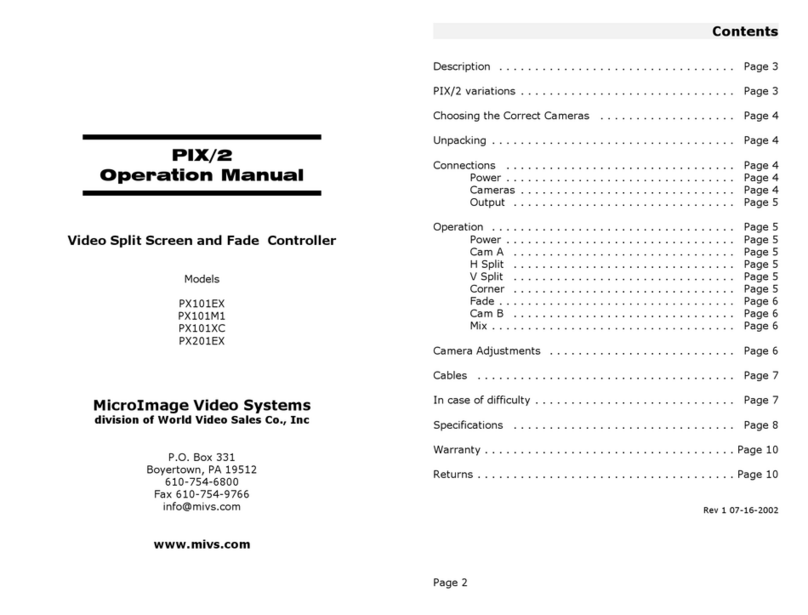
MicroImage Video Systems
MicroImage Video Systems PX101EX Operation manual

KNX
KNX SATION-DM0101.0210 Technical manual
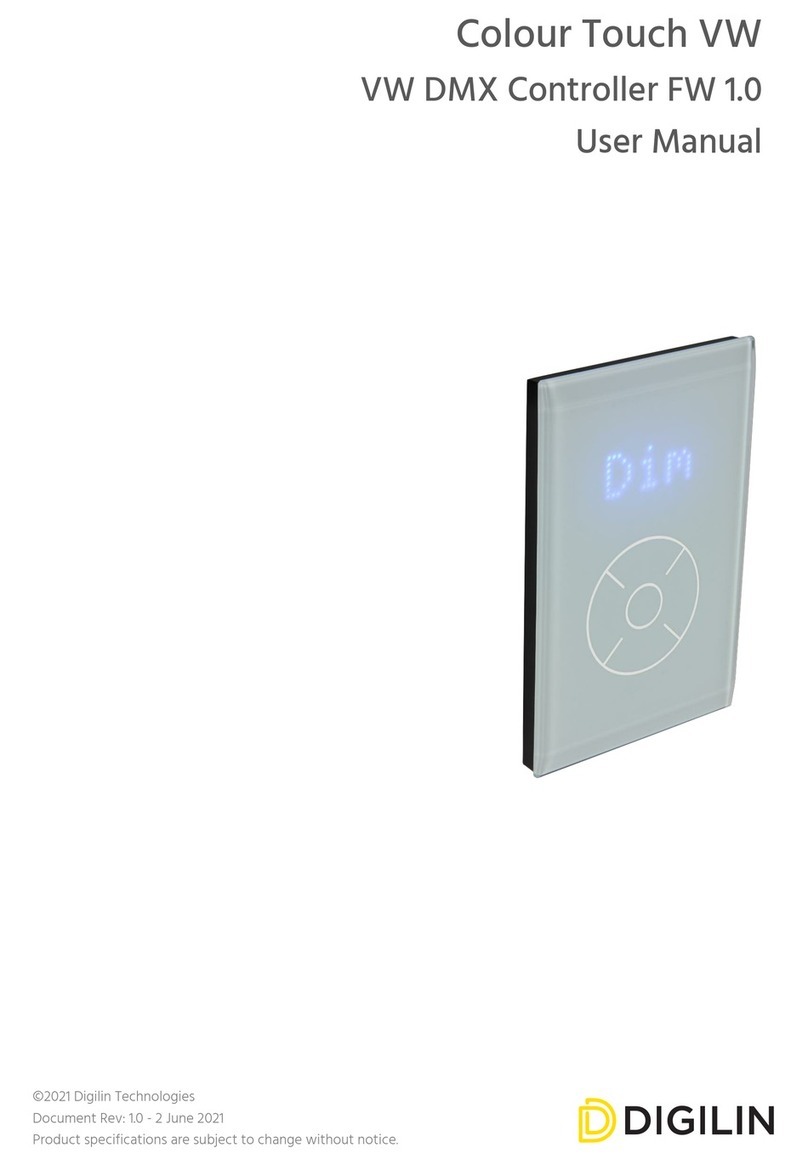
Digilin
Digilin Colour Touch VW user manual
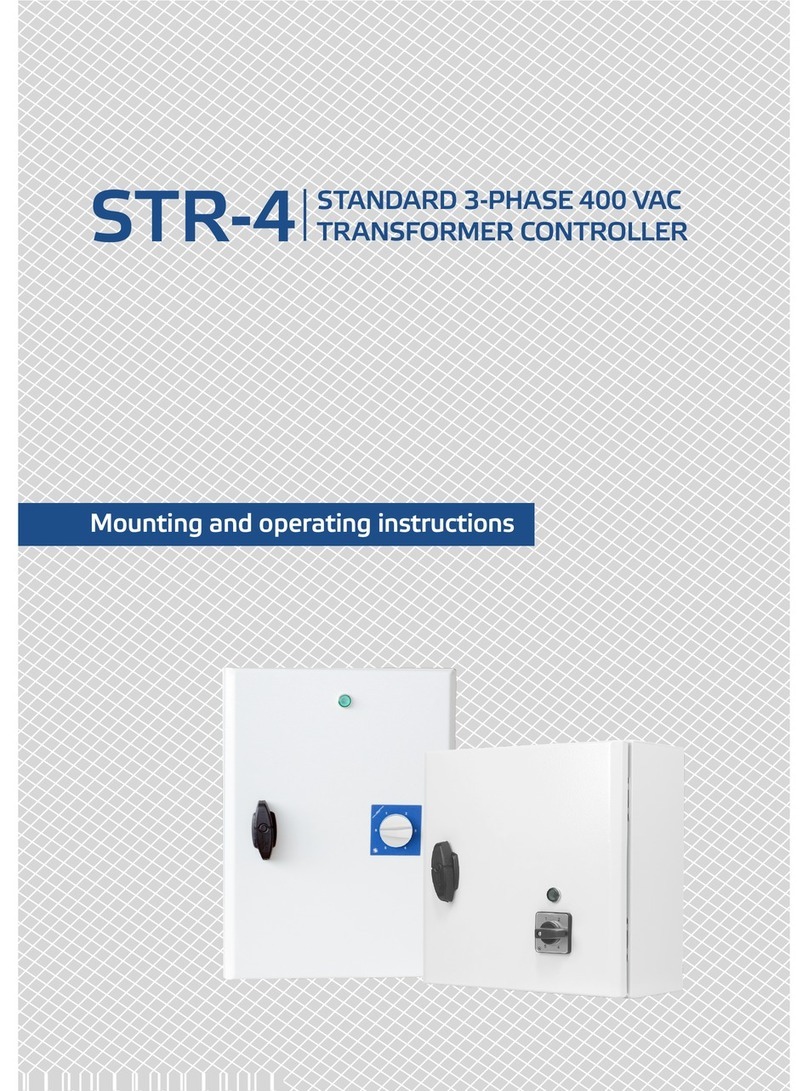
Sentera
Sentera STR-4 series Mounting and operating instructions
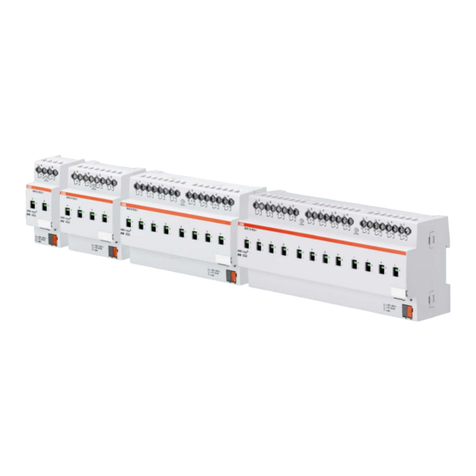
ABB
ABB i-bus SA/S 2.6.2.1 product manual
